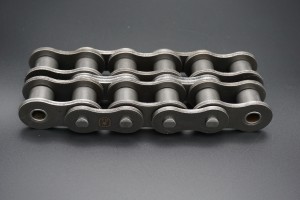1. Basic components of roller chain transmission
Roller chain transmission is a commonly used transmission method in modern mechanical transmission. It consists of several components such as chain plates, mandrels, rollers, and pins. The roller is the core component of the roller chain transmission, which is directly responsible for transmitting power and reducing the friction of the chain.
2. The role of rollers in roller chain transmission
1. Transmit power: The rollers can directly contact the driving shaft or passive shaft, receive the rotational torque of the power output mechanism such as gears and pulleys, and transmit it to the chain plate of the roller chain, so that the chain can run smoothly.
2. Reduce friction: In roller chain transmission, the rollers can reduce the direct contact area between the chain plate and the mandrel, thereby reducing chain friction and reducing heat loss and energy loss during the transmission process.
3. Increase the load-bearing capacity: The rollers can reduce the direct contact area between the chain plate and the core shaft, thereby enhancing the transmission load-bearing capacity, thus improving the working performance and service life of the roller chain transmission.
4. Alleviate bending fatigue: In roller chain transmission, the presence of rollers can alleviate the bending fatigue endured by the chain, thereby extending the service life of the chain.
3. Conclusion
Therefore, it can be seen that in roller chain transmission, rollers are crucial to the performance of the entire transmission system. It can directly affect the load-bearing capacity, length and service life of the transmission. Therefore, when selecting and using roller chain transmission , the quality and manufacturing process of the rollers also need to be considered.
Post time: Apr-30-2024

